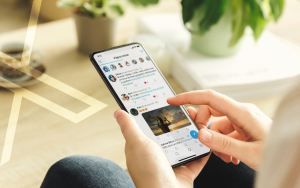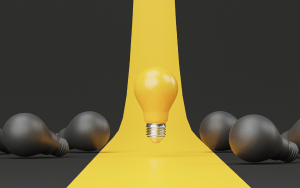

When you think of well-known brands, such as Amazon, Facebook, and Nike, what is the first image that comes into your mind? For most people, it is the brand logo. Right?
Have you ever wondered why a logo is so powerful, even if it is only a small part of branding?
Well, there is a lot more to logos than just visual appeal. To understand what makes a logo successful, we need to look at it from the standpoint of psychology. Design and psychology go a long way in explaining why logos are not merely graphics but a set of meaningful visual cues that communicate the brands’ message and meaning.
Using shapes in logo design has a long history dating back to ancient times. Ancient civilizations used shapes & symbols to represent objects they saw in their everyday lives. As technology and communication methods advance, so do the ways we use them in logos.
Geometric shapes are popular in logo design because they are easy to recognize and remember. Usually, these types of logos are composed of simple shapes that are repeated or slightly altered throughout the design. Geometric shapes can represent both masculine and feminine product designs.
The Adidas Trefoil logo is a perfect example of a geometric shape logo. The three lines make a repeating yet simple pattern that is easy to recognize.
Squares and rectangles communicate stability, strength, and reliability. They are symbolic of predictable order in the physical realm, but they can also represent sameness or predictability in the mental sphere. A square shape usually sends the message that your company is solid and trustworthy.
Caring, loving, and nurturing are just some of the words used to describe this universally appealing shape. Circles can convey a sense of community or belonging. They communicate harmony, unity, or timelessness. Circle also represents completeness, continuous motion, and never-ending possibilities.
The triangle logo represents action, achievement, aspiration, organization, and ambition. A triangle makes an effective logo design because it stands out due to its unique shape. It is memorable and unique in a crowd of rectangles and squares and stands out as bold and distinctive.
Abstract shapes are fun because they do not follow the rules of other shapes. Unlike other shapes, abstract logos also use different shapes to form a logo, with layers of meaning — like symmetrical lines, geometric shapes, or loosely interpreted real-world objects.
Abstract shapes are more easily recognizable than other types of logos since they do not require any additional work to understand what the logo represents.
One such example is the Nike Swoosh Logo; it is an iconic image that is instantly recognizable by its shape alone.
Organic shapes, on the other hand, are more complex shapes that lend themselves well to creativity, freedom, and flexibility. An example of an organic shape is the Starbucks logo which has a circular handle connected to an abstract leaf symbolizing nature.
When used correctly, organic shapes can have just as much impact as geometric shapes, if not more. The reason is that organic shapes require more skill and creativity to design.
To design a logo that is suitable for your business, you should first determine your goals. A logo design should ultimately represent the core values of your business.
The first step in creating an effective logo is to choose the right shape for your brand. Decide on the shapes you feel most connected to, and then design from there.
Different colors evoke different emotions, so make sure you choose colors that will match the kind of emotions you want to evoke. A logo’s shape should be in harmony with the color it’s made of. By using the right shape for your logo, your designer can highlight certain aspects of your brand and highlight them with the right colors.
When considering the typography in your logo, remember that the typeface or font you choose will have its own personality, too. The choice of typography in your design can set the tone. You want to look for a typeface or font that is pleasant and inviting, but also attracts attention.
The simpler, the better. Your customers won’t have a hard time figuring out what your logo represents. Simplicity is the key to a good logo.
Logos are designed to attract attention, send a message, and create a sense of loyalty among customers. If a logo is composed of shapes that speak to these three fundamental elements of visual communication, then there can be no doubt that it is successful.
We hope you have enjoyed our look at the psychology of logo design. We have only scratched the surface here, but hopefully, it has given you an understanding of the thought processes behind designing a unique, memorable logo.
If you need a logo designed for your company, we can help!


